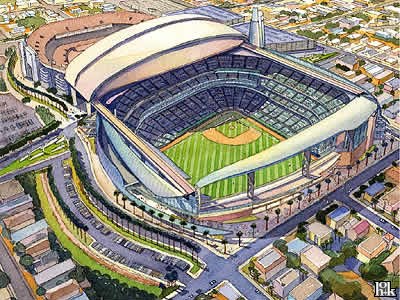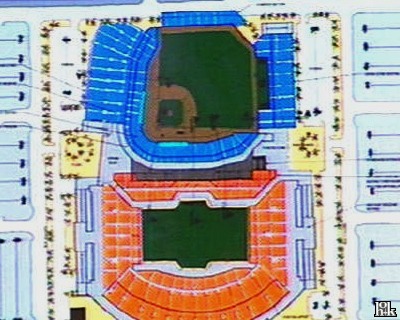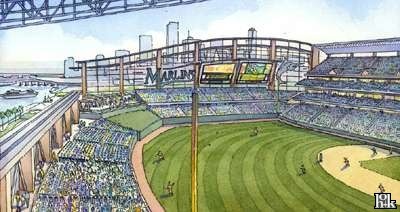New Marlins Ballpark
Miami, FloridaTenant: Miami Marlins Architect: HOK Sport (Kansas City) Miami Marlins tickets:
Location: On the site of the Orange Bowl, which is bound by NW 6th Street to the north, NW 14th Avenue to the east, NW 3rd Street to the south, and NW 16th Avenue to the west. On February 15, 2008, the Marlins, Miami-Dade County, the city of Miami and Major League Baseball reached an agreement, subject to approval, to finance a $525 million ballpark at the site of the Orange Bowl. The new facility will seat 37,000 and feature a retractable roof. The Marlins hope to break ground by the end of 2008 and complete construction by the beginning of the 2011 season. The Marlins will contribute $155 million to the project, with $35 million coming in the form of annual rent payments of $2.3 million a year, The city of Miami will contribute $13 million in hotel bed taxes plus $10 million to demolish the Orange Bowl and prepare the site. The city will also oversee the building of a $94 million, 6,000-space parking garage which the Marlins will lease. Miami-Dade County will own the venue and contribute $347 million. $50 million will come from a general obligation bond approved by voters in 2004 for an earlier ballpark proposal. The remainder will come from hotel bed and professional sports facilities franchise taxes. The agreement requires the team change its name to the Miami Marlins, and guarantees the team will stay in Miami for 35 years. * In February 2005, the Marlins reached an agreement in principle with the city of Miami and Miami-Dade County on a plan for a $420 million ballpark adjacent to the Orange Bowl. The deal still needed $60 million from the state. The team asked the Legislature for a $60 million sales tax rebate over 30 years, which would allow the team to borrow $30 million for financing the project. However, the state never approved funds for a ballpark. At a public meeting with Miami-Dade County commissioners on Wednesday, October 27, 2004, the Marlins increased their input into their stadium project in an attempt to limit overrun costs. The Marlins committed $192 million and the revised projection on the stadium became $420 million. Initially, the team was chipping in $157 million, and the total deal was targeted at $367 million. * Immediately after taking over the ownership of the Marlins in January 1999, John Henry began appealing to south Florida to build for his team a publicly financed, retractable roof baseball park. The team was sold to Jeffrey Loria in 2002 and the Marlins continued to pursue a new ballpark. In October 2003, after the Marlins won the World Series, the team and Miami-Dade County announced plans to fund $210 million toward a new ballpark that would open in 2007. In January 2004, the City of Miami proposed building a baseball only stadium for the Marlins at the site of the Orange Bowl that would adjoin the existing football stadium along its northern flank. In May 2004, the Miami-Dade County commissioners agreed to fund their portion of a new Marlins stadium. If built, the Marlins would have received all the in-stadium revenue sources (naming rights, signage, concessions and parking revenue from the roughly 4,600 parking spaces on the site) in exchange for their guarantee to cover cost overruns and sign a long term lease. The twin venues would have shared a premium seating tower, a dividing wall lined with luxury suites and club seats. Concessions, locker rooms and other operations would have been housed at lower levels.
Since 1999, many sites have been proposed for a new Marlins ballpark. The following are potential sites which have been considered: DOWNTOWN MIAMI
ORANGE BOWL
DOLPHINS STADIUM
NATIONAL CAR RENTAL CENTER
ORIOLES SPRING TRAINING COMPLEX
I-95 AND BROWARD BOULEVARD
POMPANO PARK RACETRACK
PARKLAND
Recent Articles on the New Marlins Ballpark:
Recommended Reading (bibliography):
Help us provide a better web site by completing our feedback form IMAGES: All images courtesy of the Miami Marlins and HOK Sport. Updated November 2008 Tickets to Florida Marlins, NCAA Basketball Tournament, College Football Bowl, NCAA Football, Paul McCartney, Wicked Hollywood and Wicked Miami provided by Ticket Triangle. BALLPARKS © 1996-2014 by Munsey & Suppes.
|




